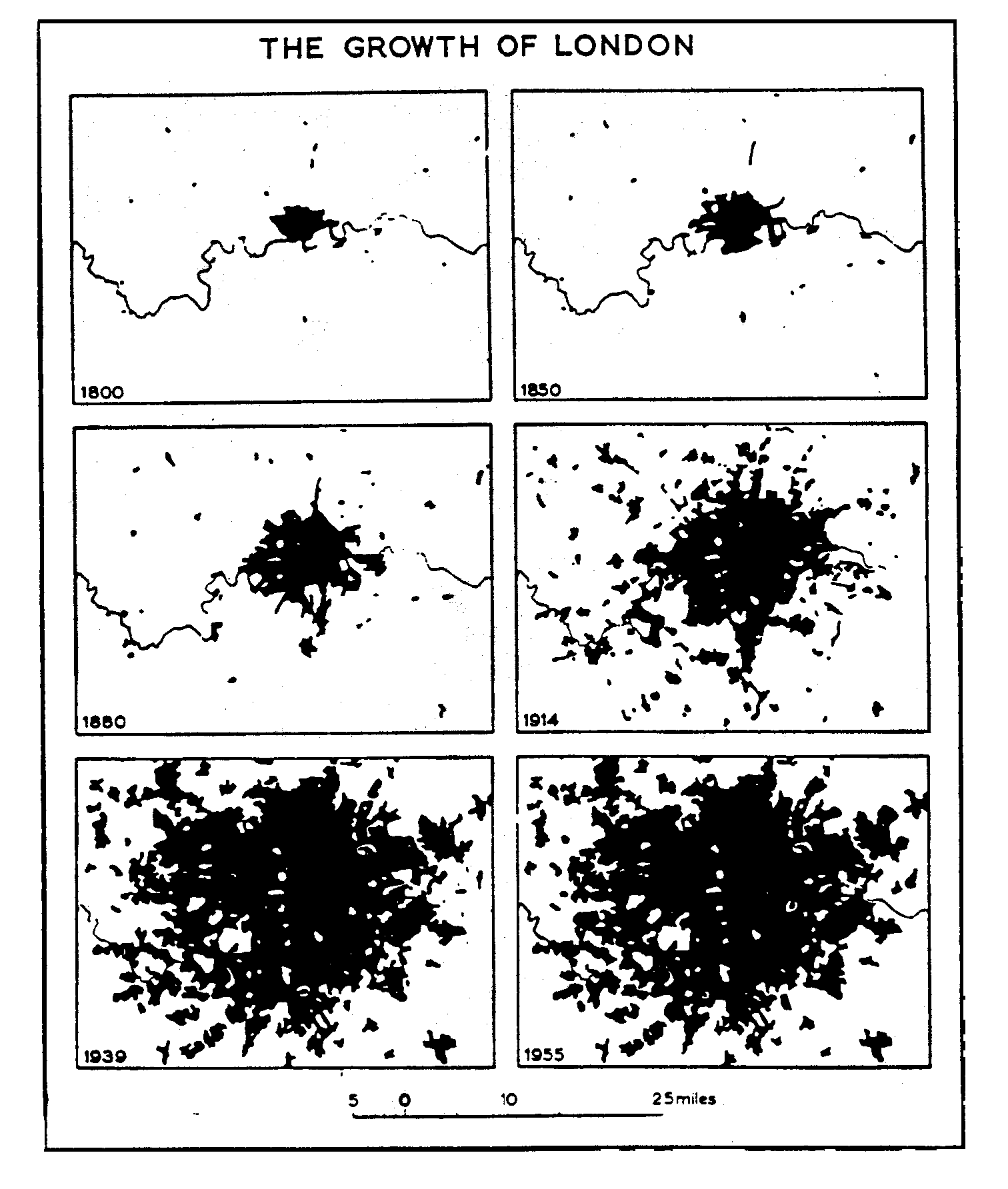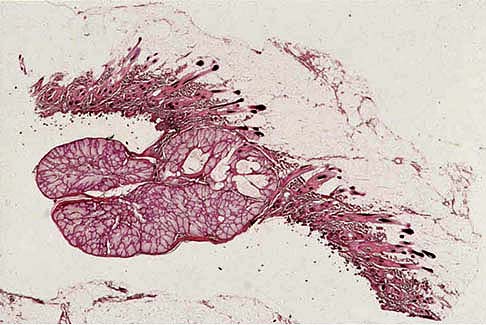Earth has undeniably suffered a rapid deterioration in health over the past few centuries. The symptoms of her illness, including global warming, water pollution, and deforestation, are ever-increasing and cannot be ignored. Dr. William Hern believes he has discovered the culprit behind this malady: Homo ecophagus, a newly-coined label for the present day humans that are devouring the environment in cancer-like fashion (Dr. William Hern, p. 8). His diagnosis involves drawing parallels between a malignant neoplasm and humans. My immediate reaction after reading this thesis was to reject a proposal that so debased the human race and exacted such a harsh blow to every human's ego. Upon further consideration, however, Hern's reasoning becomes less blatantly offensive and more plausible. Although his argument and its correlating implications contain some contradictions, his overall points appear regrettably compelling and difficult to refute.
By medical definition, a malignant neoplasm is diagnosed on the basis of four
main qualities: unrestrained growth, consumption of surrounding tissues, spreading
to satellite regions and de-differentiation of cells. According to Dr. Hern,
the human population reflects each of these characteristics in some way. He
anchors his argument by systematically linking each of these four cancer indicators
to the effect of humans on their environment. A summary of his points include
the following:
1) Unrestrained Growth:
Over the past two thousand years, the entire human population has displayed
J-shaped growth, a model that demonstrates no leveling of growth rate in the
proximate future (Southwick, 159). Through estimates of agricultural and energy
resource consumption, some population observationalists have calculated that
humans, now tallied at nearly six billion world-wide, surpassed their comfortable
carrying capacity at one to two billion people (Southwick, 161). This overshoot
adequately explains why one to two billion people currently live in extreme
hunger, "the largest number of hungry humans ever recorded in history"
(Pimenteal, 1).

We have long been aware of the damage overpopulation can wreak on humans; in response, we have attempted to limit our proliferation rate through various methods, ranging from contraceptives to governmental policies. Despite these checks, however, human populations continue to rise at alarming rates. Much like cancer, which "resists regulation and reproduces without limit," humans find themselves unable to stem their own expansion (Hern, 4). Here lies Hern's key comparison: whether the limitation method be radiation or fertility constraints, both cancer and human population growth resist regulation attempts and continue proliferation with no predictable end in sight.
2) Consumption of Neighboring Regions
As demonstrated by recent environmental deterioration, overpopulation can
cause severe and oftentimes irreversible damage to the surrounding ecosystems.
The long list of evidence for these effects includes deforestation, global
warming, ozone depletion, air and water pollution, fossil fuel consumption
and the exhaustion of agricultural lands, just to name a few.
Cities especially exemplify cancerous traits. The rate of urban population
expansion surpasses the overall human population growth rate (Southwick, 168).
Additionally, the dense concentration of human consumers makes cities extremely
"parasitic on the surrounding lands - [they] must import food, water,
air and natural resources . . . and export waste products" (Southwick,
169). Thus, cities impact not only their adjacent environment (via "some
of the world's worst air and water pollution") but also affect the regions
from which it imports supplies (Southwick, 169). Much like a tumor, cities
feed on their surroundings to fuel their ever-increasing rate of expansion.


3) Metastasis
One of the most frightening aspects of a malignant neoplasm is its capacity
to spread to satellite areas, an occurrence known as metastasis. Human population
growth exhibits this same ability through colonization (Hern, 4). When pressed
for resources, humans are especially adept at locating new reserve sites,
even if these sites are millions of miles away. The Europeans' plundering
of the New World and the damage their arrival wreaked on the American ecosystem
perfectly demonstrate the dangers of human expansion to distant regions. Here,
the parallels between colonial expansion and "a highly aggressive metastatic
cancer" are clearly apparent (Hern, 6).

4) De-differentiation
A cell not affected by cancer retains the identity of a certain tissue type.
Cancer cells, however, lose this specialized tag so that all cancerous cells
look generally similar. Thanks to increased communications and technology
transfers, human communities around the globe have also grown less and less
distinguished over time. For example, Eskimos, once defined by their dogsleds
and harpoons, now use snowmobiles and guns. The skylines of Chicago and Tokyo
share more similarities than differences (Hern, 5). Aerial or satellite pictures
will confirm the resemblance of cities halfway across the globe (Hern, 6).
This de-differentiation is a recent feature in human history; the first agricultural
societies of China, Mesoamerica and South America were markedly different.
However, the advancement of human technologies allowed for increased communications
between cultures and motivated the development of a global culture. Just as
a malignant tumor invades certain regions and assimilates them, human communities
have essentially invaded one other and assimilated their cultures.
Even though Hern's comparison seems harsh, I find his argument a very compelling
and worthwhile description of human population growth; the aforementioned
four points of similarity between humans and cancer are clear-cut and difficult
to refute. Additionally, Hern makes a valid point about the linear relationship
between technology advancement and potential damage to the environment. When
human technologies were in their nacent stages during the Pleistocene era,
"small scale human assaults on the environment had little or no lasting
impact" (Hern, 1). Yet in today's matrix of intricate technologies, "one
oil tanker captain can wipe out a whole ecosystem" (Hern, 1). Thus, as
humans have improved their technologies and placed more power in their hands,
they have simultaneously increased the risk for more concentrated and irreversible
damage to the environment.
Nevertheless, Hern's assertions have certain implications that I believe to
be fundamentally flawed, namely his views on human "tech fixes."
Despite such a morbid and pessimistic thesis, Hern still maintains hope that
damage done to the environment can be reversed with intensive resource conservation
efforts: "the human species . . . is capable of restoring environments
and saving other species from extinction and of living in harmony with the
rest of the ecosystem" (Hern, 7). This opinion seems to contradict the
rest of his argument. Furthermore, he seems strongly confident in human ability
to devise solutions to maximize scant resources, speculating that "even
elimination of the entire planetary natural environment would prevent survival
of the human species because of their ability to adapt" (Hern, 7). This
view holds that humans will be able to overcome any resource depletion by
inventing a more efficient technology (a concept known as the "tech fix").
However, David Pimentel claims that these technologies are limited in their
capabilities: he admits that new technologies can improve the efficiency of
resource consumption, but it "cannot produce an unlimited flow of those
vital natural resources that are the raw materials for sustained agricultural
production" (Pimentel, 2). Pimentel anchors his reasoning on a compelling
example: "no available technology can double the flow of the Colorado
River," which is currently being drained for irrigation purposes. Pimentel's
argument against the invincibility of the tech fix is thus more persuasive
than Hern's perspective on the matter.
This weakness in Hern's argument, however, is does not rob his argument of
its validity. The value of Hern's thesis lies in its capacity to minimize
an otherwise vague concept - the scope of human damage to Earth - to the identifiable
destructive properites of cancer. If nothing else, such a stinging view of
human beings serves as a sharp warning, a red flag to call our attention to
our destructive methods.
REFERENCES:
Hern, Dr. Warren. "Why Are There So Many of Us?" (link updated 4/08/11 to many of Dr. Hern's related papers)
Southwick, Charles H., Ch. 15 from "Global Ecology in Human Perspective" Oxford Univ. Press, 1996, pp. 159-182.
Pimentel, David. "Impact of Population Growth on Food Supplies
and Environment." http://www.dieoff.org/page57.htm